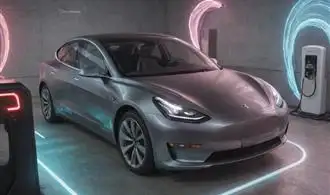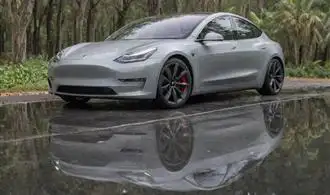
Upgrade to a High-Powered Charger
Upgrading to a high-powered charger is one of the most effective ways to cut your Tesla Model 3's charging time in half. These chargers, also known as Level 2 chargers, deliver a significantly higher voltage and amperage compared to the standard household outlets. This increased power output translates to faster charging rates, allowing you to fully replenish your battery in a fraction of the time.
One of the key benefits of a high-powered charger is the ability to take advantage of your Tesla's maximum charging capabilities. The Model 3 is equipped to handle up to 48 amps of current, which translates to a charging rate of up to 11.5 kW. By installing a compatible Level 2 charger, you can unlock this potential and enjoy much quicker charging times, often reducing the time it takes to charge your vehicle by 50% or more.
When selecting a high-powered charger, it's important to consider factors such as the available electrical capacity in your home, the charging speed you require, and the compatibility with your Tesla Model 3. Many reputable brands, such as Tesla, Chargepoint, and Siemens, offer high-quality, reliable Level 2 chargers that are specifically designed for electric vehicles. These chargers come with features like smart connectivity, mobile app integration, and even the ability to schedule charging times to take advantage of off-peak electricity rates.
In addition to the charging speed benefits, a high-powered charger can also improve the overall convenience and user experience of charging your Tesla Model 3. With the ability to fully recharge your vehicle overnight, you can wake up each morning with a fully charged battery, eliminating the need to plan around lengthy charging sessions. This can be particularly useful for those who commute regularly or need to ensure their Tesla is ready for unexpected trips or errands.
Optimize Your Charging Schedule
Maximizing the efficiency of your Tesla Model 3's charging process is crucial for getting the most out of your vehicle. By optimizing your charging schedule, you can reduce the time it takes to fully charge your car and ensure you always have the power you need. Here are some clever hacks to help you charge your Tesla Model 3 in half the time:
Plan Ahead: Before you set out, take a moment to assess your charging needs. Consider your daily driving distance, upcoming travel plans, and the state of your battery. This information will help you determine the optimal charging schedule and avoid unexpected delays.
Utilize Off-Peak Hours: Take advantage of off-peak electricity rates by scheduling your charging during the night or early morning hours. This can significantly reduce the cost of charging and may even allow you to charge your vehicle faster due to lower grid demand.
Optimize Your Home Charging Setup: Ensure your home charging setup is optimized for maximum efficiency. Use a high-amperage circuit (such as a 240V/50A) to take advantage of your Tesla's maximum charging capability. Consider upgrading your electrical panel if necessary to support a higher-powered charger.
Leverage Supercharger Network: When on the road, take advantage of Tesla's vast Supercharger network. These high-powered charging stations can replenish your battery much faster than a standard home charger. Plan your route to include strategic Supercharger stops to minimize downtime.
Monitor Charging Efficiency: Keep a close eye on your charging efficiency by tracking your energy consumption and charge times. This data can help you identify opportunities to optimize your charging routine and make adjustments as needed.
Precondition Your Battery: Before starting a charging session, precondition your Tesla's battery by using the Tesla app or in-car controls. This can help the battery reach an optimal temperature for faster charging, reducing the overall charging time.
Leverage Regenerative Braking
Leveraging Regenerative Braking in your Tesla Model 3 can significantly reduce your charging time, maximizing your driving efficiency. Regenerative braking is a unique feature that converts the kinetic energy of your vehicle into electrical energy, which is then stored in the battery. This process not only extends your driving range but also allows you to charge your battery while on the go.
- Familiarize yourself with the regenerative braking settings in your Tesla Model 3. Understand the different modes, such as Standard, Low, and Off, and experiment to find the setting that best suits your driving style and needs.
- Maximize the use of regenerative braking by anticipating your stops and gradually slowing down. Avoid abrupt braking, as this can reduce the effectiveness of the regenerative braking system.
- When approaching a stop sign or traffic light, take your foot off the accelerator and allow the regenerative braking to slow down your vehicle. This will charge your battery while you're coasting to a stop.
- Plan your driving routes to include more downhill sections or winding roads. The regenerative braking system will capture the kinetic energy generated during these driving conditions, providing a more efficient charge.
- Monitor your battery charge level and driving range. This will help you better understand how your driving habits and the use of regenerative braking impact your overall efficiency and charging time.
- Consider the weather conditions and road surfaces. Regenerative braking may be less effective on slippery surfaces or in extreme weather conditions, so adjust your driving accordingly.
Utilize Preconditioning Technology
Tesla's preconditioning technology is a game-changer when it comes to charging your Model 3 in half the time. This innovative feature allows you to prepare your battery pack for optimal charging conditions, resulting in a significantly faster and more efficient charging process. By understanding how to leverage this technology, you can maximize the charging speed and minimize the time you spend waiting for your vehicle to be ready.
One of the key benefits of preconditioning is its ability to warm the battery pack before charging. The Model 3's battery is designed to perform best within a specific temperature range. When the battery is cold, it can't accept charge as quickly as it can when it's at the optimal temperature. Preconditioning heats the battery, ensuring it's ready to accept a high-powered charge from the moment you plug in.
To utilize preconditioning, you can schedule it through the Tesla mobile app or the in-car touchscreen. Simply set your desired departure time, and the vehicle will automatically begin the preconditioning process a short time before you plan to leave. This ensures the battery is at the perfect temperature when you're ready to hit the road.
Another advantage of preconditioning is its ability to maintain the battery's temperature during the charging process. By keeping the battery warm, it can continue to accept charge at a rapid rate, rather than gradually slowing down as the battery heats up. This results in a more consistent and efficient charging experience, allowing you to replenish your battery in less time.
- Schedule preconditioning for at least 30 minutes before your desired departure time to ensure the battery is fully warmed up.
- Use preconditioning when charging at high-powered stations, such as Superchargers, to take full advantage of the increased charging speeds.
- Monitor your battery's temperature during charging to ensure it's maintaining the optimal range.
- Adjust your preconditioning schedule based on the ambient temperature and your driving needs.
Combine Charging Techniques
As a Tesla Model 3 owner, you're always looking for ways to maximize the efficiency of your charging experience. One powerful technique to reduce your charging time is to combine multiple charging methods. By utilizing a combination of charging solutions, you can shave off precious minutes from your charge times and get back on the road faster.
One of the most effective combinations is to leverage both your Tesla's onboard charger and a high-powered external charger. Your Model 3's onboard charger is capable of handling up to 11.5 kW of power, but you can unlock even greater charging speeds by connecting to a Level 2 charger that delivers 240V and up to 48A of current. This allows you to take advantage of the full capabilities of your vehicle's charging system, resulting in charge times that can be 50% faster than relying solely on the onboard charger.
Another technique is to charge your Tesla at home using a dedicated wall connector while you sleep, and then top up your battery at a public fast-charging station during your daily commute or errands. The combination of slow, overnight charging at home and rapid top-ups at a Supercharger or other high-power station can provide you with the optimal balance of convenience and charging speed.
















